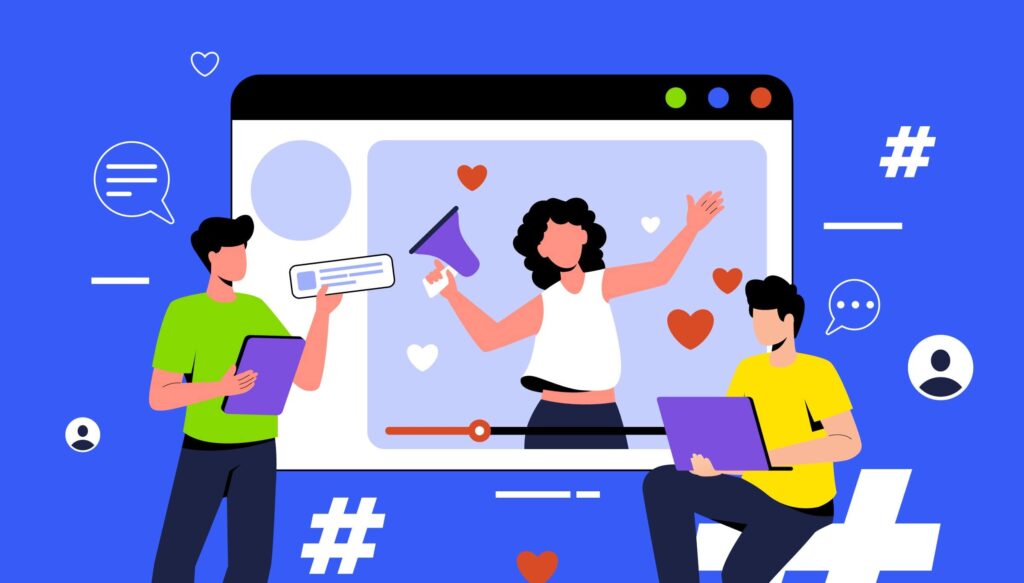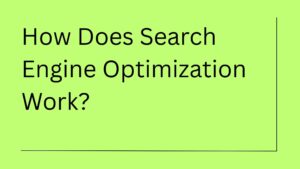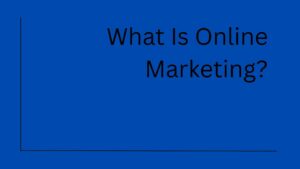Influencer marketing isn’t just a fleeting buzzword; it’s become a core strategy in modern digital marketing. And that’s not by accident. People don’t trust brands the way they used to. Traditional ads? Skipped. Banner ads? Ignored. But people still trust other people, especially those they follow, admire, and connect with online. That’s where influencer marketing steps in.
But let’s not oversimplify it. Influencer marketing is part psychology, part content, and part community. It works because it doesn’t always feel like marketing. It blends in with the feed. It entertains. Sometimes it educates. Other times, it just sparks curiosity.
Still, influencer marketing isn’t automatic success. Done poorly, it backfires. Done well, though? It builds brand awareness, trust, and loyalty in ways even the best ad creatives can’t replicate. This guide breaks down what it really is, how it works, and where it’s going without the jargon, fluff, or one-size-fits-all promises.
What Is Influencer Marketing, Really?
At its simplest, influencer marketing is a collaboration between a brand and an individual who has an engaged audience. But honestly, that definition barely scratches the surface.
What makes this form of marketing powerful is the way it operates through personal influence. Think of it like this: you’re scrolling through YouTube and your favorite content creator casually mentions how this coffee brand changed their morning routine. You believe them not because they’re an expert, but because you trust them. That’s influence. That’s marketing.
Some influencer partnerships are paid. Others are product-based. Some involve long-term ambassadorships; others are one-off collaborations. But the common thread is always the same: trusted voices sharing products or services with an audience that actually listens.
And here’s the key part: audiences don’t just listen. They engage. They ask questions. They click. Sometimes, they buy. And they do so because the message didn’t come from a brand, it came from someone they already like and trust.
From Celebrities to Micro-Influencers: A Quick Evolution
Before the term “influencer” became mainstream, we just called them celebrities. Brands partnered with big-name actors, athletes, musicians and paid them to represent their products. Think Michael Jordan for Nike or Britney Spears for Pepsi.
But with the rise of social media, influence started shifting. Suddenly, everyday people were building followings. Bloggers. YouTubers. Gamers. Makeup artists. People who weren’t famous in the Hollywood sense, but who built communities around shared interests.
That shift changed everything.
What followed was the breakdown of the influencer landscape into types:
- Mega-influencers (1M+ followers) – think global celebrities or top-tier creators.
- Macro-influencers (100K–1M) – professional creators with large reach and credibility.
- Micro-influencers (10K–100K) – niche-focused, high engagement.
- Nano-influencers (<10K) – everyday users with loyal, tight-knit audiences.
Today, many brands actually prefer working with micro or nano-influencers. Why? Because their content feels more real. Less polished. Less like advertising and more like a friend giving advice. And in today’s skeptical digital world, that subtle shift makes all the difference.
Why Influencer Marketing Works? Even in a Skeptical World
Consumers are savvier than ever. We all know when we’re being marketed to. We’ve developed a kind of mental spam filter. So, how is influencer marketing still thriving?
Because when done right, it doesn’t trigger that filter.
Influencer marketing works because it’s about trust. And trust is something traditional ads struggle to earn. Influencers already have a relationship with their followers. They’ve earned their attention over time through shared interests, consistency, and, yes, a certain kind of relatability.
Even when people know it’s a sponsored post, they’re often still receptive. Why? Because the recommendation is coming from someone they chose to follow, not a brand trying to interrupt them.
There’s also an emotional layer. Good influencers don’t just sell, they tell stories. They connect products to real-life moments. They show how something fits into their day. And when you see someone you admire loving a product in a real, unforced way? That influence is incredibly powerful, whether you’re aware of it or not.
The Many Faces of Influencers (And Why That Matters)
Not all influencers are the same. And that’s a good thing.
One of the biggest mistakes brands make is lumping all influencers into one category. But the ecosystem is diverse, and that diversity is what makes influencer marketing adaptable.
Here are a few broad types:
- Lifestyle influencers share slices of everyday life, creating aspirational content.
- Niche experts go deep into a subject beauty, finance, fitness, books, or gaming.
- Educators and thought leaders focus on insights, especially in B2B or professional spaces.
- Entertainers lead with humor, storytelling, or performance.
Understanding who you’re working with and how their content connects with their audience is crucial. A fashion brand might thrive with aesthetic Instagram creators. A B2B software company might see better ROI from LinkedIn thought leaders.
Also worth noting: an influencer’s “face” isn’t just about what they post, it’s about how they post. Are they funny? Honest? Vulnerable? Outspoken? All of that shapes how your brand message will land.
Where All “Influencer Marketing” Happens: Platforms, Channels, and Mediums
Different platforms offer different strengths, and understanding the nuances can make or break your campaign.
- Instagram is still great for visuals: lifestyle, beauty, fashion, and short-form video like Reels.
- TikTok has exploded thanks to its algorithm, which gives even small creators a shot at massive reach.
- YouTube offers longevity and depth, making it ideal for reviews, tutorials, and brand storytelling.
- Twitch is powerful for live, immersive interaction, great for gaming, tech, and even product unboxings.
- LinkedIn is the home for professional influence, especially in SaaS, consulting, and entrepreneurship.
There’s also X (formerly Twitter) for short takes, Pinterest for product discovery, and Substack or newsletters for niche, intimate communication.
Smart brands don’t just follow trends; they consider where their audience actually spends time. And just as importantly, they tailor content to the platform, not just repurpose the same post everywhere. A YouTube vlog doesn’t work as a TikTok, and forcing it will make you look out of touch.
What Successful Influencer Marketing Looks Like
Let’s look beyond theory, what does it actually look like when influencer marketing works?
Take Glossier. Instead of relying on big celebrity names, they grew by empowering real users to share their skincare routines. Customers became brand evangelists, and micro-influencers spread the word like wildfire, building community along the way.
Or GoPro, which practically invented UGC-based influencer marketing. Their product was the content, and athletes, adventurers, and everyday users showed it off for free, generating massive engagement without traditional ads.
One more: HelloFresh. They partnered with YouTubers and podcasters, integrating their meal kits into daily life content, “here’s what I’m making for dinner tonight,” rather than staged promos.
The common thread? The marketing didn’t feel like marketing. It felt natural. Integrated. Real. And that’s where the magic happens.
Finding the Right Influencer (Hint: It’s More Than Follower Count)
It’s easy to get dazzled by big numbers. A million followers? Seems impressive. But that number alone doesn’t guarantee reach, engagement, or impact.
Finding the right influencer is about fit, not fame. You want someone who aligns with your brand’s tone, values, and audience. Someone whose followers match the people you’re trying to reach.
Here’s what to look at:
- Engagement rate: Are people liking, commenting, and sharing?
- Audience demographics: Are they in your target location, age group, interests?
- Content quality and voice: Does their style align with your brand’s personality?
- Past brand partnerships: How have they promoted other products?
You also want someone who believes in your product. Passion is hard to fake, and followers can sniff out inauthenticity a mile away. Better to partner with someone who genuinely loves what you offer than someone who’s just reading a script.
The Business Side: Costs, Contracts, and Compensation
So how much does influencer marketing actually cost?
It depends. A nano-influencer might be happy with a free product and a repost. A mega-influencer might charge $10,000+ for a single post. And everything in between exists.
Some general benchmarks:
- Nano (1K–10K followers): $50–$200 per post
- Micro (10K–100K): $200–$1,500
- Macro (100K–1M): $1,500–$10,000
- Mega (1M+): $10,000–$100,000+
But pricing isn’t just about follower count, it includes:
- Content type (posts, videos, stories, lives)
- Usage rights (can you reuse the content?)
- Exclusivity (are they locked out of promoting competitors?)
- Campaign duration (one-time vs. long-term partnership)
Always, always use a contract. Define deliverables, timelines, approval processes, and how the influencer should disclose sponsorship. Transparency builds trust and keeps you compliant with advertising regulations.
How to Measure If Your Influencer Campaign Is Working
Not everything in influencer marketing can be tracked, but that doesn’t mean it can’t be measured.
Start by defining what success looks like:
- Brand awareness? Track impressions, reach, and branded search lift.
- Engagement? Monitor likes, comments, shares, and saves.
- Sales? Use affiliate codes, UTM links, and last-click attribution.
- Sentiment? Look at comments, DMs, and reviews for qualitative feedback.
Also, consider the time horizon. Sometimes the results are instant (like a TikTok that goes viral). Other times, it builds over weeks, especially in trust-based categories like health, finance, or tech.
And don’t forget about content value. A well-shot influencer video might double as a repurposed ad or website feature. That’s ROI too.
Pitfalls, Red Flags, and Common Mistakes
Influencer marketing can be powerful, but it’s also easy to mess up.
Here’s what to watch for:
- Choosing based on vanity metrics instead of actual influence.
- Over-controlling the content, which makes it feel scripted and fake.
- One-off posts with no follow-up rarely drive sustained results.
- Failing to brief influencers properly, leading to misaligned messaging.
- Neglecting disclosure rules, which can land you in hot water.
Also, avoid generic messages. “I love this brand!” isn’t enough. Good influencer campaigns feel personal, not forced. Encourage real use. Real feedback. Real voices.
Finally, don’t ghost influencers after the campaign. If it worked, build a relationship. That’s where the long-term ROI lives.
The Future of Influencer Marketing
Influencer marketing isn’t static it evolves constantly. What worked in 2020 may feel stale today.
Here’s what’s coming:
- AI-powered influencers like Lil Miquela are changing the game, though opinions are mixed.
- Creator-led brands are booming think MrBeast’s Feastables or Emma Chamberlain Coffee.
- Deeper integrations of brands co-creating products, not just campaigns.
- Focus on authenticity, raw, unedited content is gaining favor over perfect visuals.
- Value-based partnerships, audiences want influencers to stand for something, not just sell stuff.
We’re also seeing influencer marketing extend into B2B and non-traditional spaces, from accountants with podcasts to therapists with Instagram reels. Influence isn’t limited to lifestyle; it’s wherever trust lives.
Final Thoughts: Is Influencer Marketing Worth It?
Let’s end with the big question: is influencer marketing really worth it?
Short answer? Yes, but only if you treat it like a relationship, not a transaction.
Done right, influencer marketing humanizes your brand. It builds trust in a world drowning in noise. It introduces your products in ways that feel real, not rehearsed.
But it requires thought. Respect. Creativity. A willingness to let go of control and let creators do what they do best: connect.
So if you’re looking for attention, clicks, or quick sales? Sure, you can try ads. But if you’re looking to build something deeper, loyalty, trust, community, then yes, influencer marketing is more than worth it.
It might just be the most powerful tool in your entire strategy.
FAQs related to influencer Marketing
Influencer whitelisting allows brands to run paid ads through an influencer’s social media account, rather than just their own. This gives the brand access to the influencer’s audience using their identity, increasing trust and reach. Dark posting is similar; it refers to targeted ads that don’t appear on the influencer’s public feed but are served directly to specific audiences. These tactics combine the authenticity of influencer content with the targeting power of paid ads.
Yes, there are legal considerations brands must take seriously. Influencers are required to disclose paid partnerships clearly usually by tagging #ad or #sponsored. If they don’t, both the influencer and the brand could face fines or reputational damage. Additionally, brands should ensure that influencer content doesn’t make unverified claims, especially in regulated industries like health or finance.,
Managing dozens or even hundreds of influencers manually can get messy. Many brands use influencer relationship management (IRM) platforms like Aspire, CreatorIQ, or Upfluence to track communication, deliverables, payments, and performance. These tools act like CRMs for influencer marketing helping marketers streamline collaboration while maintaining that personal, human touch that makes the partnerships effective.,
Affiliate marketing can be a strong incentive model for influencers. Instead of or in addition to a flat fee, influencers earn a commission on each sale they drive through a unique link or promo code. This aligns incentives between the brand and influencer, encouraging more proactive promotion. It’s also easier to track ROI, since conversions can be directly attributed to each creator.
Absolutely. Influencer marketing isn’t just for selling products. Many nonprofits, government organizations, and NGOs use influencer partnerships to raise awareness around social issues, public health, and educational campaigns. In these cases, the goal might be action (like signing a petition) or a mindset shift (like reducing stigma around mental health), and the right influencers can help reach audiences that traditional messaging struggles to engage.






2 thoughts on “What is Influencer Marketing? A Definitive Guide to Explore”
Hello mate,
You’re so awesome! I don’t believe I have read a single thing like that before. So great to find someone with some original thoughts on the influencer marketing topic. Really… thank you for starting this up. This website is something that is needed on the internet: someone with a little originality!
I’m a blooming influencer and was looking for a proper starter guide, pretty! This has been a really wonderful post. Many thanks for providing these details.